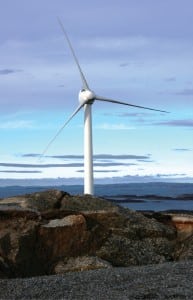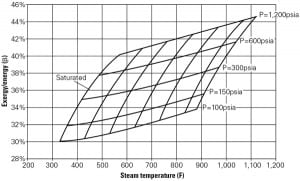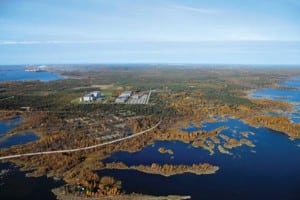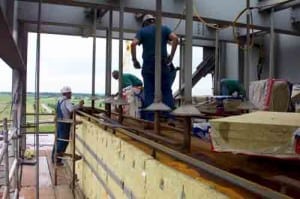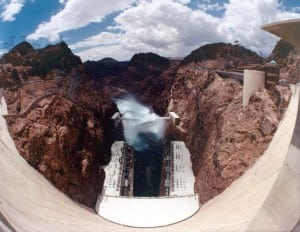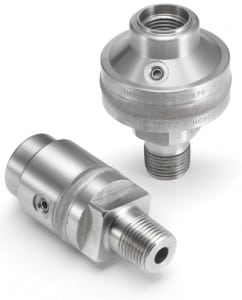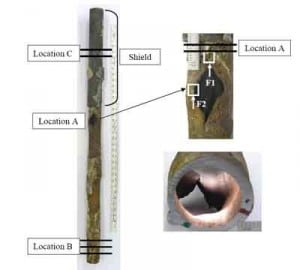-
Coal
EPA Issues Final Greenhouse Gas Tailoring Rule
Less than 24 hours after the unveiling of sweeping Senate legislation to reduce U.S. greenhouse gas emissions, the Environmental Protection Agency released a final Clean Air Act rule that defines emission thresholds for greenhouse gas permitting requirements for power plants and other large stationary sources.
-
Wind
Competition for Offshore Turbine Market Heats Up
One indication that the world’s offshore wind sector is poised to soar is the escalating competition between turbine makers. This April, General Electric (GE)—the world’s second-largest manufacturer of wind turbines—announced it would introduce a 4-MW gearless wind turbine (a design requiring no gearbox between turbine and generator) in 2012. The move directly challenges market leader Siemens Energy, of Germany, and its head-to-head competitor, Denmark’s Vestas Wind Systems.
-
Business
A Proposed Definition of CHP Efficiency
Many alternative approaches for determining a useful definition of combined heat and power fossil power plant efficiency have been proposed, although most fail to produce a universal definition. This follow-up report to our February story on plant efficiency shows how an exergy analysis supplies the elusive solution.
-
Coal
American Power Act Dangles Carrots for Nukes, Coal, Gas
Facing a difficult uphill slog in a sharply polarized Senate, Sens. John Kerry and Joseph Lieberman have unveiled long-awaited draft climate change and energy legislation that includes billions of dollars in incentives for the nuclear, natural gas, and coal industries aimed at attracting enough bipartisan support to overcome an all-but-certain filibuster led by the Senate Republican leadership.
-
Nuclear
Finnish Government OKs Two Nuclear Plant Proposals
Finland’s government in April approved two of three proposals for the construction of new nuclear reactors in an effort to rid the country of its dependency on electricity imports from other countries—especially Russia—as well as to decrease carbon emissions.
-
News
In-Line Vibration Transmitter
IMI Sensors released model 682A09 ICP In-Line 4-20 mA Vibration Transmitter, a device that installs with any industrial accelerometer and converts the vibration signal to a 4-20 mA velocity output that can be trended with today’s PLC, DCS, or SCADA control room systems. Its sleek design installs right into the cable run. No DIN rails, […]
-
Coal
Comparing the Value of Single- and Double-Layer Insulation on Boiler Walls
Boiler insulation practices have moved from using a single layer to a double layer of the same total thickness in recent years. However, this dual-layer trend has a downside: higher installation costs and the opportunity for contractors to cut corners when installing insulation. It’s time to return to using single-layer insulation on power boilers.
-
Hydro
Hoover Dam Contracts for Low-Water Hydroelectric Turbine
Growing water demand and reduced runoff due to drought has depleted waters feeding many hydroelectric power plants around the world—sometimes causing severe power shortages, such as in Brazil and New Zealand. The 2,080-MW Hoover Dam (Figure 4), a facility that generates power for more than a million people in Arizona, Nevada, and Southern California, is not immune to this phenomenon. According to a recent study by the Scripps Institution of Oceanography, the Colorado River system, which includes Lake Powell and Lake Mead (both manmade reservoirs), is suffering a net deficit of nearly one million acre-feet of water per year.
-
News
Caustic Media–Shielding Seals
Types 510 and 511 diaphragm seals are the newest addition to Ashcroft’s line of instrument media isolators. These economical, all-welded seals protect pressure gauges, transmitters, switches, and other instruments against the potentially harmful effects of caustic media. The seals are available for use with ranges from vacuum through 5,000 psi, and they can be threaded […]
-
O&M
The Role of Fireside Corrosion on Boiler Tube Failures, Part II
One of the primary challenges of reliably burning coal is managing the corrosion experienced by the furnace heat transfer surfaces. Fireside corrosion remains a leading cause of failure in superheater and reheater tubes. In Part I, we examined three case studies of different failure modes experienced by tubes located throughout the furnace. In Part II, we conclude with two additional boiler tube failure case studies.
Search


